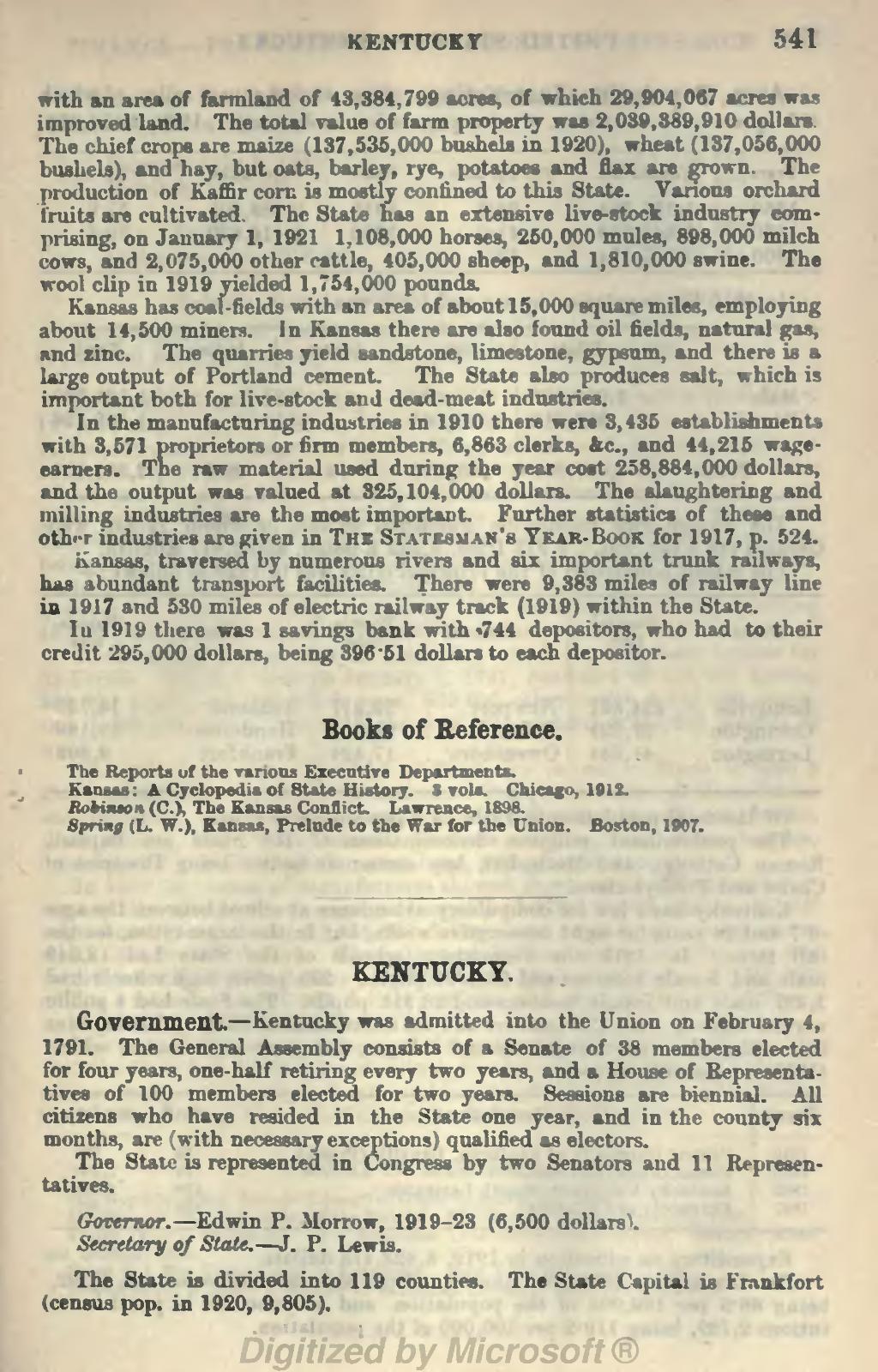KENTUCKY 541
with an area of farmland of 43,384,799 acres, of which 29,904,067 acres was improved land. The total value of farm property was 2,039,389,910 dollars The chief crops are maize (137,535,000 bushels in 1920), wheat (137,056,000 bushels), and hay, but oats, barley, rye, potatoes and flax are grown. The production of Kaffir corn is mostly confined to this State. Various orchard fruits are cultivated. The State has an extensive live-stock industry com- prising, on January 1, 1921 1,108,000 horses, 250,000 mules, 898,000 milch cows, and 2,075,000 other rattle, 405,000 sheep, and 1,810,000 swine. The wool clip in 1919 yielded 1,754,000 pounds.
Kansas has coal-fields with an area of about 15,000 square miles, employing about 14,500 miners. In Kansas there are also found oil fields, natural gas, and zinc. The quarries yield sandstone, limestone, gypsum, and there is a large output of Portland cement. The State also produces salt, which is important both for live-stock and dead-meat industries.
In the manufacturing industries in 1910 there were 3,435 establishments with 3,571 proprietors or firm members, 6,863 clerks, &c, and 44,215 wage- earners. The raw material used during the year cost 258,884,000 dollars, and the output was valued at 325,104,000 dollars. The slaughtering and milling industries are the most important. Further statistics of these and oth'-r industries are given in Thb Statesman's Tear- Book for 1917, p. 524.
Kansas, traversed by numerous rivers and six important trunk railways, has abundant transport facilities. There were 9,383 miles of railway line in 1917 and 530 miles of electric railway track (1919) within the State.
In 1919 there was 1 savings bank with '744 depositors, who had to their credit 295,000 dollars, being 396 51 dollars to each depositor.
Books of Reference.
The Reports of the various Executive Departments.
Kansas: A Cyclopedia of State History. 3 vols. Chicago, 1912.
Robituon (C), The Kansas Conflict. Lawrenc
Spring (L. W.), Kansas, Prelude to the War for the Union. Boston, 1907.
KENTUCKY.
Government. — Kentucky was admitted into the Union on February 4, 1791. The General Assembly consists of a Senate of 38 members elected for four years, one-half retiring every two years, and a House of Representa- tives of 100 members elected for two years. Sessions are biennial. All citizens who have resided in the State one year, and in the county six months, are (with necessary exceptions) qualified as electors.
The State is represented in Congress by two Senators and 11 Represen- tatives.
Governor.— Edwin P. Morrow, 1919-23 (6.500 dollarsl Secretary of State. — J. P. Lewis.
The State is divided into 119 counties. The State Capital is Frankfort (census pop. in 1920, 9,805).
